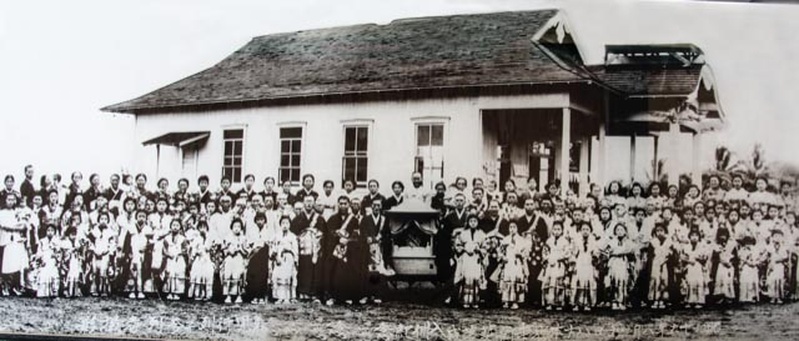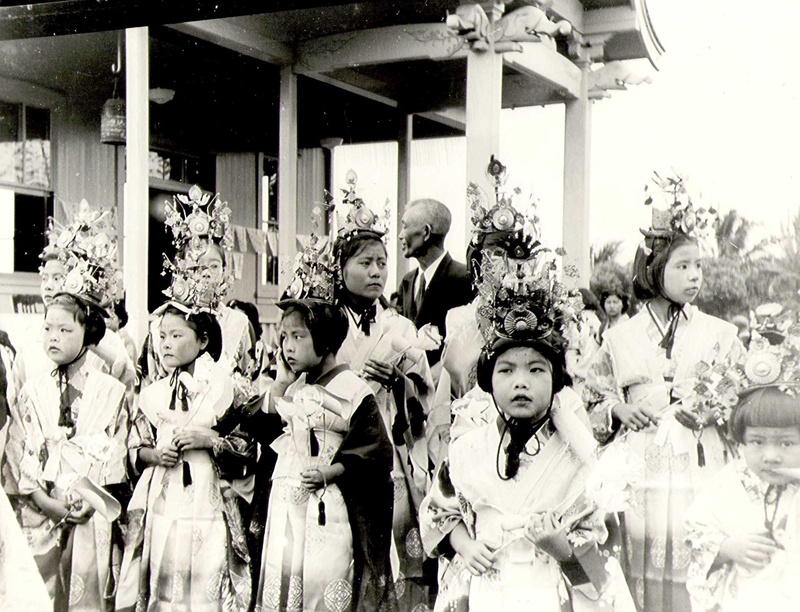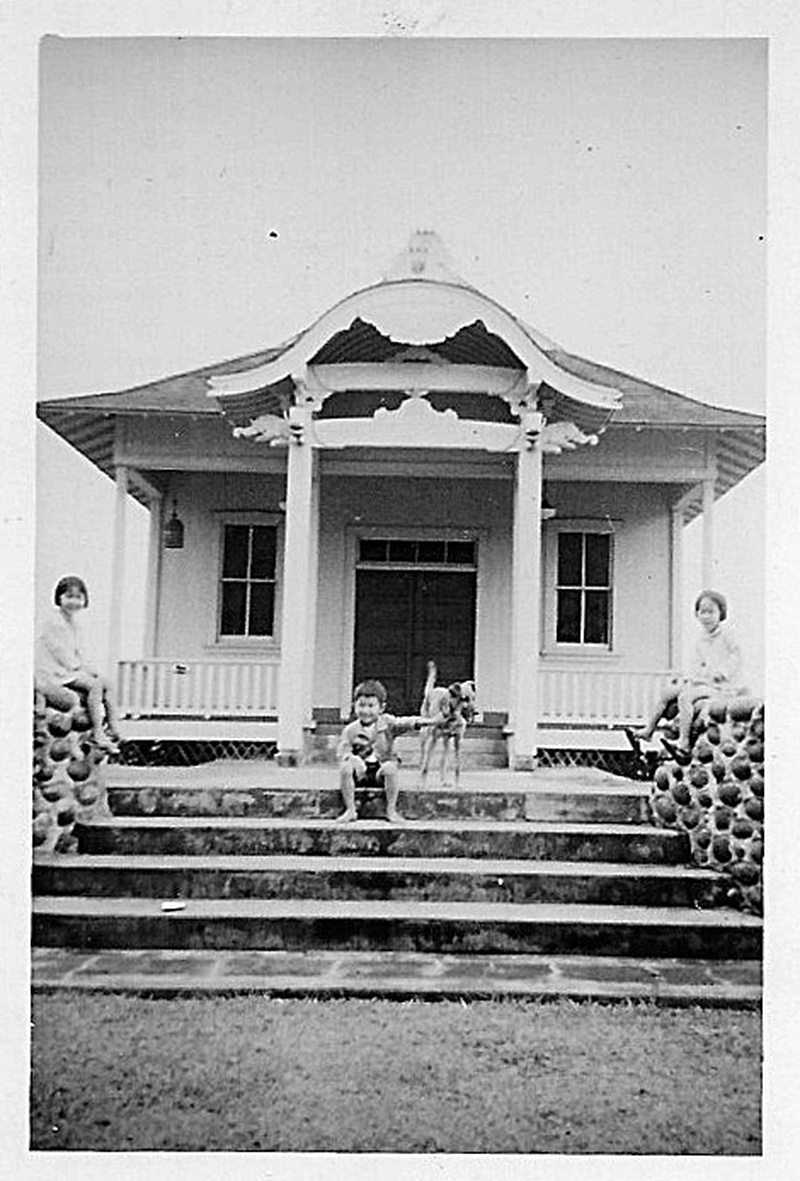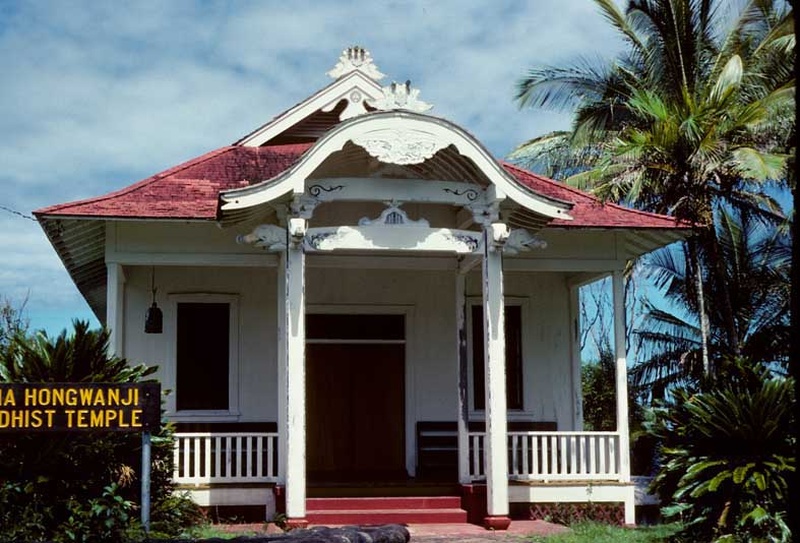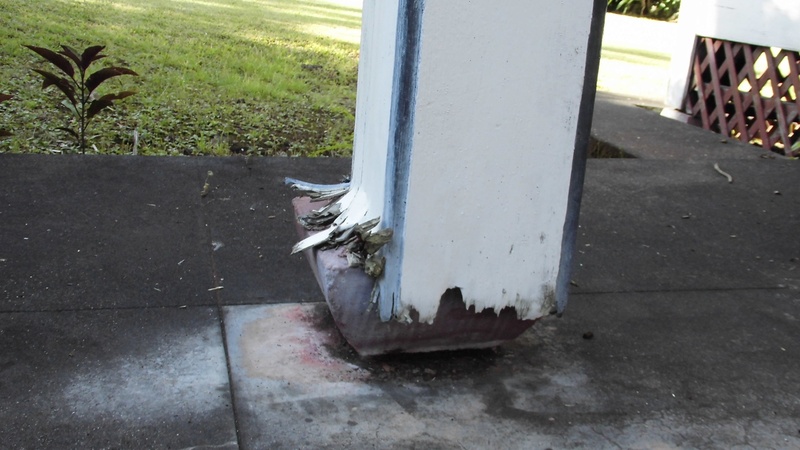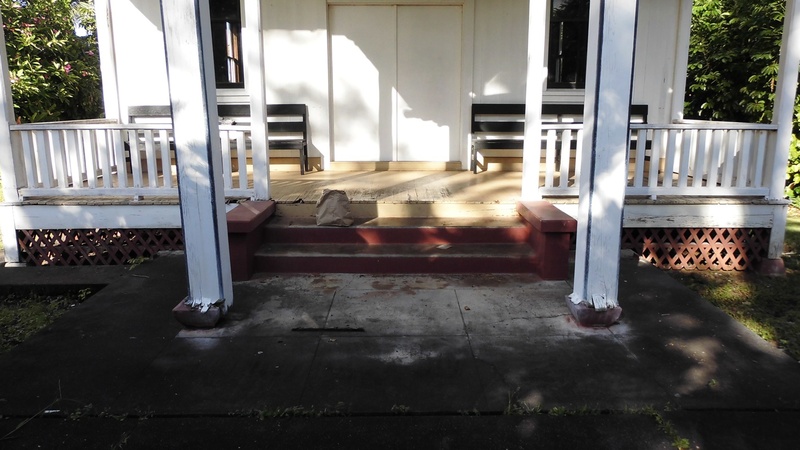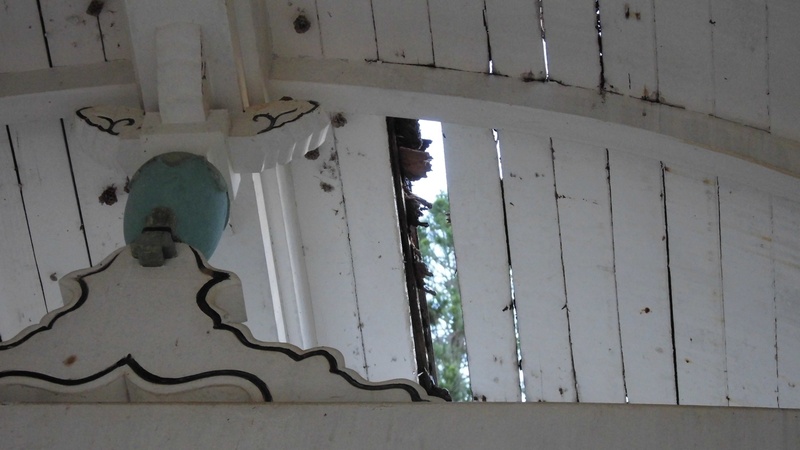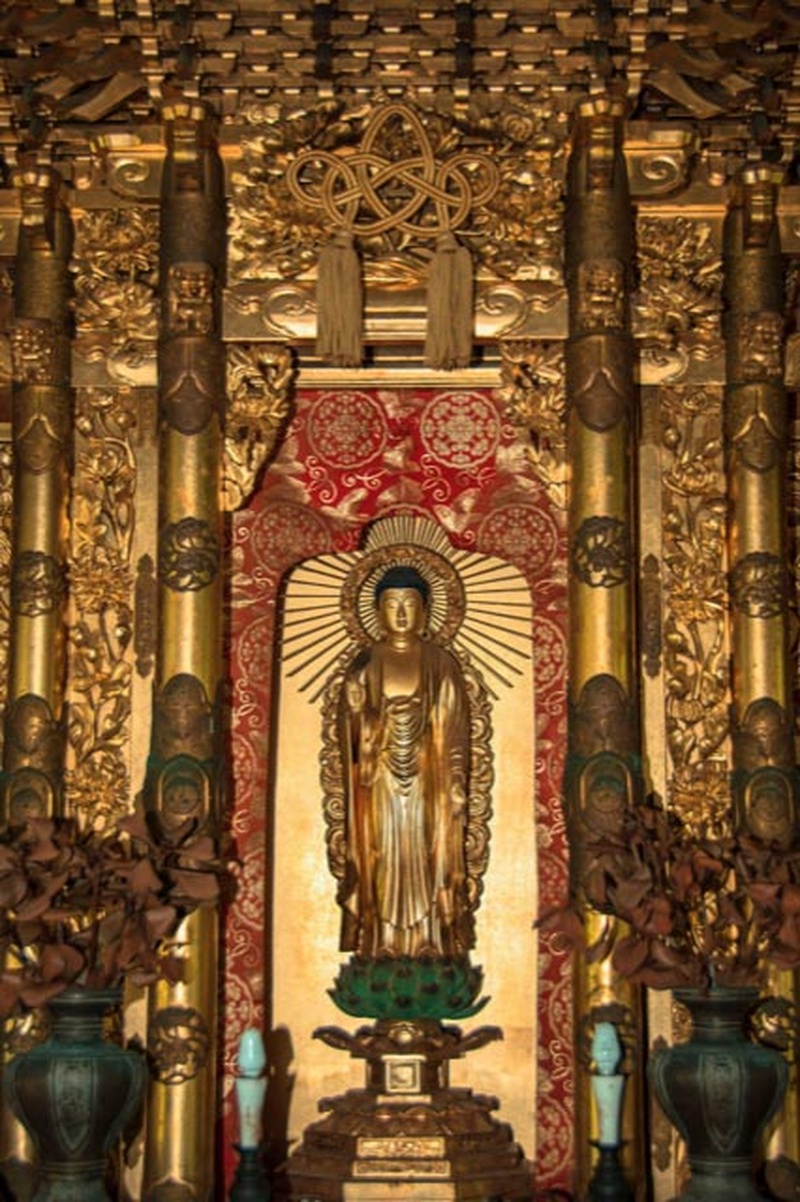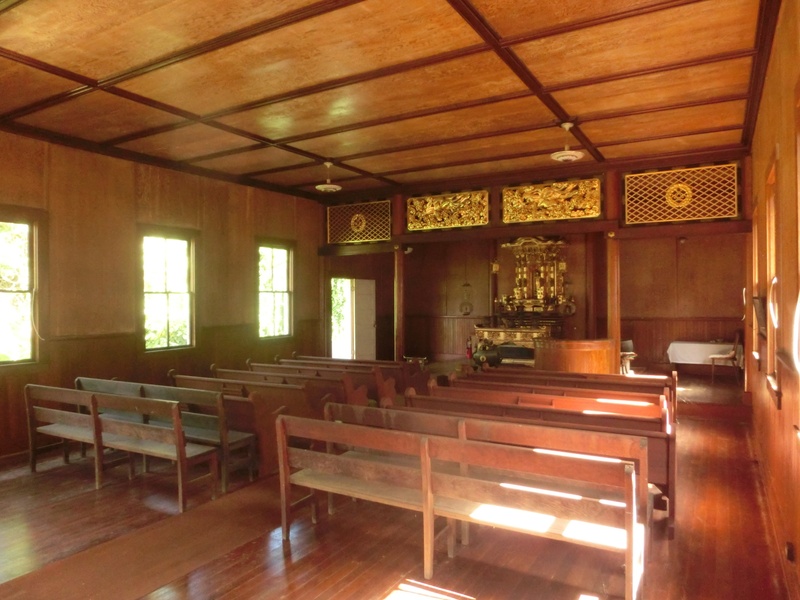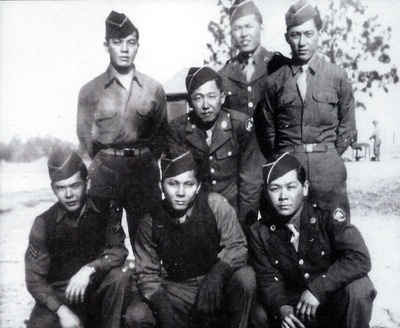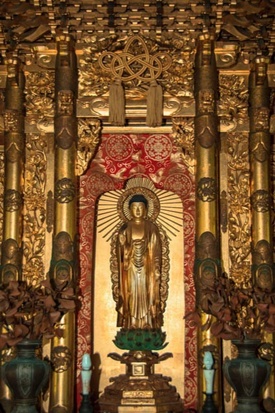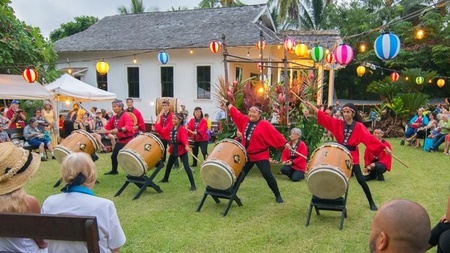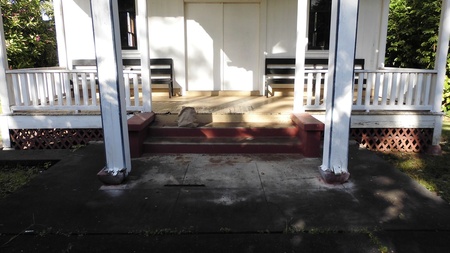The Hana Hongwanji Gakuen Temple (know as Hana Buddhist Temple) located on Maui in Hawai‘i is a culturally significant building nominated to be listed in the National Register of Historic Places. Replacing the original and more austere temple erected in 1926, this temple was an extravagant new upgraded temple meant to be more ornate and befitting to the Buddha. It is the crown jewel that stands today as a symbol of achievement for the Japanese immigrants who began arriving in Hana by the late 1800s.
They came to the isolated fishing village of Hana to work predominantly in the sugar industry for the Hana Plantation Company. They overcame a lack of resources and through hard work, discipline, and skill became one of the most populous and successful ethnic groups in the rapidly growing Hana Town.
The Hana Nisei influence persists to this day – nearly eighty years since the Temple and her Japanese community went into a sharp decline as a result of WW II and the closing of the sugar mill. But that Crown Jewell gift from these highly motivated and far sighted progenitors is rapidly deteriorating and in need of renovation.
The Gakuen Temple or “Learning Garden Temple” was opened in 1940. Built by skilled local Japanese carpenters, the Hana Temple is the last “Hawaiian Eclectic” style temple in Maui. This style is unique in that it employs a fusion of traditional Japanese and western plantation construction styles. The iconic stylized cranes and elephants carved into the the kohai (portico) beams serve as signifiers to identify the building as a Japanese Buddhist temple. The raised and slightly sloped obon lawn was well suited to host the annual bon dance and was sizeable enough to accommodate the residents of the Japanese Camp. By the time the construction of the temple was complete there were over a hundred Japanese families living in the Hana area.
The temple and grounds were the epicenter of life until the last days of the Japanese Camp. Weddings, funerals, birthdays, bon dance and other cultural celebrations were held there. It is said that the entire town came out to the bon dance.1 Ancient sepia toned photographs from this time show hundreds of kimono clad Temple members posing in front of the beautiful building.
When displaying the old panoramic photos at the Hana Buddhist Temple Preservation Association’s Taro Festival booth many community elders are excited to point out their parents and grandparents in the photos.
Following the outbreak of WW II, the temple reverend was interned in a mainland concentration camp, as were two other temple members who were store and restaurant owners in the area. Like the other Japanese Buddhist temples during the war, the building was closed down and no one could gather for services. The newly opened temple stood vacant and was painted green to camouflage it from enemy sea vessels.
When the reverend returned to Hana after the war, there were only 12 temple members remaining. By 1946 the faltering sugar plantation was shut down. Few temple members remained as most left Hana to find work elsewhere.
By 1952 services were held at the temple only once a year. The temple and her grounds were maintained by a local Japanese Hana-born original member of the Hana Hongwanji who was himself whisked away by the winds of war. Of the fourteen Hana boys who joined the famed 442nd Infantry during the war, Isaichi Fujikawa survived and returned to Hana where his family still resided. A young man at the start of the war, he would return home, a wounded veteran, and along with his brother Goro would serve as caretakers of the temple. Goro, himself a veteran of the Korean Conflict, would carry the temple stewardship into the new century.2
Alas, Uncle Goro was able to pass the torch on to his niece, Myrna, to carry on as the care taker of the Hana temple. In 2015, a year before Goro’s death, the Hana Buddhist Temple Preservation Association (HBTPA) formed.
The Association is a group of community members who have come together with the idea of preserving the temple so that it may be again utilized by the Hana community. There are practitioners of Japanese and Hawaiian Arts and crafts on the board who would like to see community arts and crafts classes held at the temple. There are former educators on the board who would like to see educational support for the youth of the community. There are also practitioners of yoga, meditation and tai chi who hope to have a venue in which to practice. Most importantly the temple must be open to people as a place to reflect and pray and to find peace.
The tradition of the bon dance has been upheld by the HBTPA. For the past four years the HBTPA has hosted the bon dance including the first at the temple since 1974. Hundreds of attendees each year enjoy the Hana bon dance with it’s unique and locally flavored version of the highly anticipated Japanese traditional festival.
Since 2014, the Hana bon dance has marked the end of the Maui obon season. It concludes a fun summer of dancing, drumming, and touching base with the ancestral spirits in a merry and festive community event. Members of Maui Taiko perform at the event each year, accompanied by traditional dancers, agree that the Hana bon dance is unique especially because of it’s locally sourced decorations and fusion and Japanese cuisine. The ambiance of the tropical flower and vine adorned bamboo-framed yagura centered on the manicured obon lawn in the foreground of the lantern moonlit temple are an impressionable sight. This can be found only on the second Saturday of September at the historic Hana temple situated amongst the row of tall pines along the Hana coast.
The HBTPA has worked many long hours fundraising in the community. With the proceeds, construction to seal the leaking temple roof will begin in January. The organization has launched a fundraising campaign to bring the entire project to fruition.
Due to the rapid deterioration of the structure the HBTPA is urgently seeking funding ahead of the January grant deadlines. In order to be eligible for grant support the HBTPA is required to provide matching funds and depends on the support of the ever – widening community of cultural diversity.
Please help us to save this beautiful historic icon that represents so much to the community as well as all those who come to visit. You may contact us by email at hanabuddhisttemple@gmail.com or make a tax deductible donation by sending a check to the Hana Buddhist Temple Preservation Association, PO Box 714, Hana HI 96713 or through PayPal to our email address. The Hana Buddhist Temple Preservation Association is a non profit 501c3 public charity whose purpose is to make a brighter future for Hana by keeping the Hana Temple open and available to the community.
Notes:
1. Okano,Takashi. Hana Days of My Youth by Takashi Okano (1985)
2. Minatoishi, Lorraine. National Register of Historic Places Registration Form (2011)
© 2018 Joe Brower


